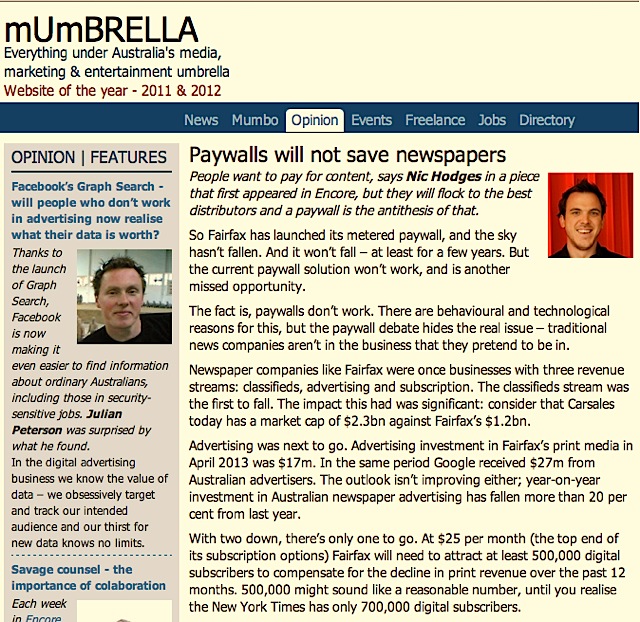Here’s a quite smart analysis of the challenge ‘traditional’ news companies face vis-à-vis the internet eating their lunch …
Certainly the landscape for those working in ‘da media’ has changed (understatement!) and those who look at journalism as a career are increasingly faced with putting their skills and experience to work feeding the machine (or manipulating it).
Subscribers? Well, sure, OK, some will. But not many. And paywalls of some sort will come and be tried. There’s been some good discussion recently about The NZ Listener and National Business Review paywalls. The number of subscribers is anaemic.
As Nic Hodges’s article (above) points out, people ARE willing to pay for content — but is that willingness tied to content of perhaps a more ‘specialised’ or tailored nature? … not ‘general news’.
There are political writers at, say. the NZ Herald who I would pay to read. Likewise at Fairfax’s stuff.co.nz. I guess I will, at some point be tested on that, in some way.
In the meantime, the content scrapers, aggregators, and parasites of every stripe (including this website, I acknowledge) will continue to plunder and pick at the expensively-produced output of the (let’s face it:) major media free of charge … to entertain ourselves and our (ahem) readers.
It is a quandary.
– P
Afterthought: The way the New York Times allows free links through the paywall from social media & RSS feeds means I routinely read their publication (like, a lot) but rarely if ever trip the monthly ‘counter’. How does that work for them?
It seems that mainstream media (not meant pejoratively) value, as they should, reputation and influence. Well, those aims won’t persevere if less people are reading your output, will they?


